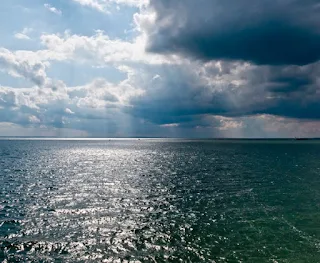Continental Shelves of Africa
A continental shelf of a coastal State includes the seabed and subsoil of the land underlying the seawaters surrounding the coast to a drop-off point called the shelf break. From the break, the shelf descends toward the deep ocean floor in what is called the continental slope that descends to the abyssal plain.
The comparatively easy to get to continental shelf is the most used and best understood part of the ocean floor. Continental shelves are an oasis in the ocean for plants and animals due to the abundance of sunlight, shallow waters, and nutrient packed soil deposits from rivers and lakes.
The continental shelf extends beyond a States territorial sea, 12 nautical miles, throughout the continuity of the landmass to the outer edge of the continental margin. If the continental margin is very long, coastal countries can claim only 200 nautical miles from the territorial sea.
Africa has 36 recognized coastal countries. A coastal State has sovereign rights and exclusive jurisdiction over its continental shelf for the purpose of exploring it and exploiting its natural resources. Even though they are underwater, continental shelves are part of the continent. The actual boundary of a continent is not its coastline, but the edge of the continental shelf.
Africa's waters have abundant wildlife and oil resources on the continental shelf areas on the Atlantic Ocean, Red Sea, Indian Ocean, and Mediterranean Sea. Africa's continental shelves are broad, gently sloping plains covered by relatively shallow water. Water depth over the continental shelves is usually between 100–200 meters or 330–660 feet.
West African nations have some of the richest fishing grounds in the world. People have depended on the continental shelf for thousands of years to provide fish, and seafood such as crabs, shrimps, prawns, and crayfish; mollusks, including clams, and oysters, in Africa and, more recently, the continental shelf has been an important region for oil.
The continental shelf makes up less than 10 percent of the total area of the oceans. Yet over a billion people, most of whom are poor, depend on fish as a source of animal protein. Fish is the cheapest source of animal protein.
Africa has 36 recognized coastal countries, here is the list below.
- Madagascar
- Somalia
- South Africa
- Mozambique
- Egypt
- Eritrea
- Morocco
- Libya
- Angola
- Namibia
- Tanzania
- Tunisia
- Algeria
- Cabo Verde
- Gabon
- Nigeria
- Sudan
- Mauritania
- Liberia
- Ghana
- Kenya
- Senegal
- Cote d'Ivoire
- Seychelles
- Cameroon
- Sierra Leone
- Guinea-Bissau
- Guinea
- Djibouti
- Equatorial Guinea
- Sao Tome and Principe
- Mauritius
- Republic of the Congo
- Benin
- The Gambia
- Togo
Did you know?
Africa is surrounded by water. The Territorial sea is in control of a coastal state that extends 12 miles beyond its land territory and internal waters to an adjacent global conveyor belt and claims extends to the air space over the territorial sea.











